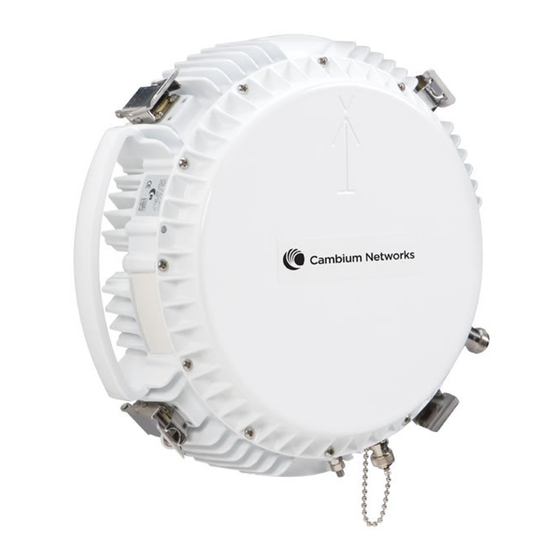
Cambium PTP 800 Series Wireless Backhaul Manuals
Manuals and User Guides for Cambium PTP 800 Series Wireless Backhaul. We have 1 Cambium PTP 800 Series Wireless Backhaul manual available for free PDF download: User Manual
Cambium PTP 800 Series User Manual (682 pages)
Table of Contents
-
-
-
Overview28
-
-
Ipv674
-
Web Server75
-
Email Alerts78
-
Snmp79
-
AES License84
-
Fips 140-294
-
-
-
1+0 Links126
-
1+1 HSB Links131
-
2+0 Links145
-
-
Ordering Cmus169
-
Ordering Odus183
-
Ordering Omks207
-
-
-
-
Definitions220
-
Grant of License220
-
Confidentiality222
-
Transfer222
-
Updates222
-
Maintenance223
-
Disclaimer223
-
U.S. Government224
-
Term of License224
-
Governing Law224
-
Assignment224
-
Entire Agreement225
-
-
-
-
-
ETSI Method329
-
FCC Method331
-
-
-
-
Mounting the RMK344
-
Installing Irfus402
-
Upgrading Irfus428
-
-
Configuring Qos555
-
-
-
-
Glossary679
-
Advertisement
